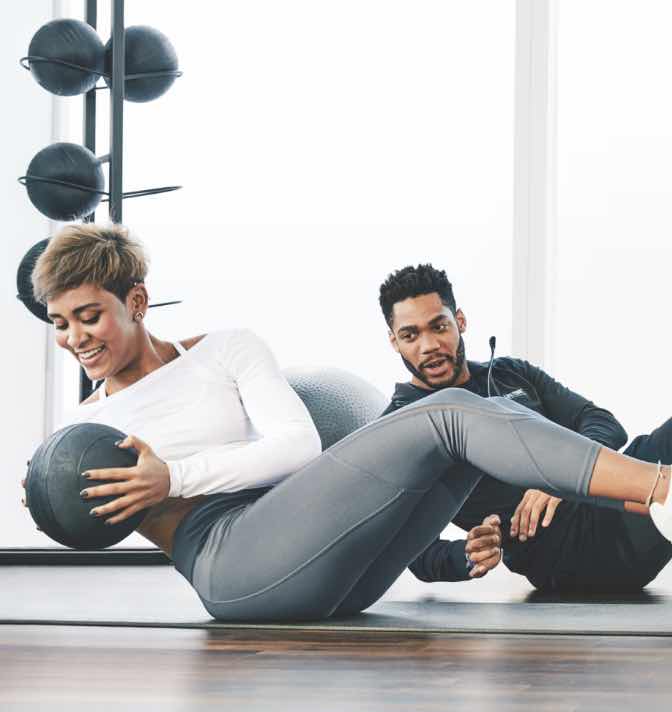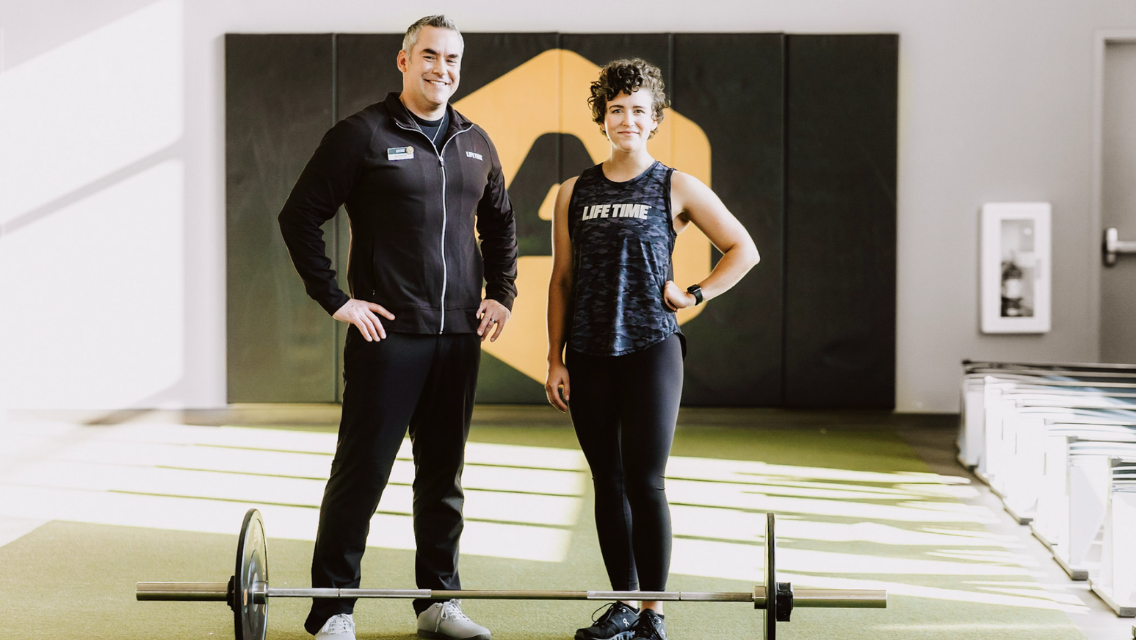In my 15 years in the industry, I’ve had the honor of working with some amazing fitness professionals — many of them highly credentialed, passionate, and eager to share their experience and knowledge with those who are ready to make changes for the better.
I’ve also heard a lot of assumptions about what trainers do and the role they play in a health and fitness journey, along with some misguided impressions about training and exercise.
Here are five things that every trainer wishes you knew:
1. You don’t need to lose weight before starting a program.
“I need help, but I need to lose 15 pounds first.”
This sentiment is sometimes rooted in the perceived fear of how tough workouts with a trainer might be and the need to prepare for them. Sometimes it’s a form of procrastination from getting the needed coaching and support to make change. And still sometimes, it stems from feeling self-conscious about not being “in shape.”
Here’s the thing: trying to lose weight before engaging in a program serves only to delay the benefits of it.
Not only that, but a lot of the common tactics used to drop weight first actually might be counterproductive and inadvertently extend the amount of time needed to reach your eventual goal.
For example, a drastic calorie cut might slow down thyroid function, tanking your energy levels and making it harder to burn fat once you do start a targeted program. On the other hand, implementing frequent, intense exercises on your own in an attempt to torch calories before meeting with a trainer might establish poor movement patterns that will need to be undone to help you prevent injury when you do get started.
Trainers are not judging your starting point. One of the jobs of a great trainer is to take you from point A to points B, C, and so on as effectively as possible.
2. Soreness is not a badge of honor.
Any time you push yourself or switch up the type of workouts you do, some soreness is normal and inevitable.
However, soreness should be periodic and mostly manageable. Often, we hear exclamations of extreme soreness (typically after an intense endeavor or class, for example) that is immediately followed by a statement of endearment toward the activity that caused it.
The truth is, if you’re feeling a workout several days later or are having legitimate trouble going up and down the stairs and moving around, you likely overdid it. This level of damage doesn’t serve a healthy purpose, and it’s unlikely that it’s moving you toward your goals.
On the flip side, note that just because you don’t feel sore doesn’t mean your workout was ineffective.
Read more here: “Delayed Onset Muscle Soreness (DOMS): How to Reduce Post-Exercise Soreness”
3. You’re always in the driver’s seat.
While trainers are there as a guide and a partner to your success, you are the one who makes the call of how aggressively — or how conservatively — you would like to work toward your goal. The client should always set the tone for the level of intensity they are ready for, and the trainer can help set a plan and realistic expectations in terms of goals and results.
Read more here: “Is Your Goal Realistic?”
For context, remember that every client a trainer works with has a different set of circumstances and unique set of expectations. The more you communicate about what you’re looking for, the more your trainer can design your program to suit your needs.
If you want more help, guidance, structure, or intensity, ask. If you’re overwhelmed and want to throttle back and take it more slowly to work on things step-by-step, that’s OK too.
And also note: It’s completely normal to adjust what you’re looking for as your health and fitness journey progresses. Your trainer wants your frequent input, feedback, and communication so they can best help you succeed.
4. Working hard and burning calories doesn’t mean you’re working out effectively.
It’s entirely possible to be an active person who consistently challenges yourself with exercise and still not see results. There are several potential reasons for this, including (but not limited to):
- Too much high-intensity activity, which can send a message to your body to burn carbohydrate (instead of fat stores).
- Poor form during exercise movements, which adds stress to the body, limits effectiveness and strength gains, and increases the risk of injury.
- An imbalanced approach that lacks either strength training, aerobic (cardiovascular) training, or recovery work.
- A program design that is too advanced which may trade off the quality of the movements for the sake of getting the workout done, or that is not advanced enough and doesn’t add sufficient challenge in the first place.
An effective exercise program is about more than just moving, sweating, and burning calories — it’s about taking a progressive, periodized approach to your plan that is specific to your goal. Remember, exercise is stimulus for your body to change and adapt, and trainers are experts at helping ensure you have a well-designed plan.
Read more here: “Workouts vs. Exercise Programs: Which One Is Right For You?”
5. Exercise can’t undo poor nutrition, lack of sleep, or unmanaged stress — but it helps.
Your efforts, both in workouts and outside of them, will be what drives your results — or doesn’t.
Think of it this way: even if you worked out with a trainer every single day for an hour, that’s still only 4 percent of your time. The other 96 percent of your time is filled with your personal choices for movement, sleep, stress management, and nutrition.
If your nutrition choices are less than stellar but you’re training regularly, it’s obviously better for you than not eating well and also not training. But know this: your exercise cannot undo the effects of poor nutrition.
The same goes for stress management and poor sleep. While exercise can be an amazing, endorphin-releasing stress management tool and energy booster, it needs to be used appropriately. Adding frequent, intense exercise on top of being constantly under slept or stressed out in your personal or professional life is not only unhelpful, but will likely disrupt your metabolism and set you up for injury.
Your trainer can — and should — adjust your exercise program design to suit your level of stress or fatigue. But if you’re constantly entering your sessions in stress overload or sleep deficit, the level of stimulus that can be implemented responsibly from exercise is limited.
Best case scenario? Prioritize sleep, manage stress (even if you’re busy), and take steps to upgrade your diet within what feels reasonable to you. This will set you up to reap the maximum benefits from the work you put into your training program.
Read more here: “Do You Need a Personal Trainer — Or a Fitness Professional?”
Bonus: They are cheering you on, both in and out of your sessions.
Most fitness professionals choose their career path based on their passion and intrinsic desire to help others, whether that be to move without pain, boost their confidence with a desired change in body composition, or reach their athletic potential.
Every milestone you reach — no matter if it’s a personal best in the weight you squatted, a number on the scale you haven’t seen in years, or an unbroken streak of workout consistency — makes your trainer proud and is something they want to celebrate with you.
The hard truth is that the world we live in makes it easy and convenient to be unhealthy. However, fitness professionals are there to help you go against the grain and become the best and healthiest version of yourself.





